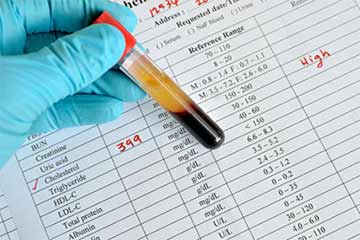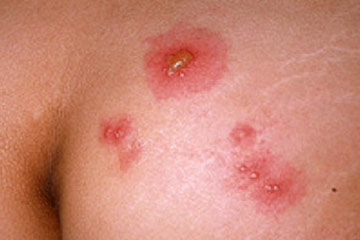Stem Cells and Diseases
The Promise of Stem Cells
Studying stem cells will help us understand how they transform into the dazzling array of specialized cells that make us what we are. Some of the most serious medical conditions, such as cancer and birth defects, are due to problems that occur somewhere in this process. A better understanding of normal cell development will allow us to understand and perhaps correct the errors that cause these medical conditions.
Another potential application of stem cells is making cells and tissues for medical therapies. Today, donated organs and tissues are often used to replace those that are diseased or destroyed. Unfortunately, the number of people needing a transplant far exceeds the number of organs available for transplantation. Pluripotent stem cells offer the possibility of a renewable source of replacement cells and tissues to treat a myriad of diseases, conditions, and disabilities including Parkinson's disease, amyotrophic lateral sclerosis, spinal cord injury, burns, heart disease, diabetes, and arthritis.
Clinical Trials for Stem Cell Therapies:
Human embryonic stem cells:
Scientists have been able to do experiments with human embryonic stem cells (hESC) since 1998, when a group led by Dr. James Thomson at the University of Wisconsin developed a technique to isolate and grow the cells. Although hESCs are thought to offer potential cures and therapies for many devastating diseases, research using them is still in its basic stages.
The NIH funded its first basic research study on hESCs in 2002. Since that time, biotechnology companies have built upon those basic foundations to begin developing stem cell-based human therapies. There are currently two active clinical trials using cells derived from human embryonic stem cells, both being conducted by a biotechnology company called ACT. The company has laboratories in Marlborough, Massachusetts and corporate offices in Santa Monica, California. ACT has begun enrolling patients for Phase I (safety and tolerability) clinical trials of two hESC-derived stem cell products:
- The first ACT trial is testing the safety of hESC-derived retinal cells to treat patients with an eye disease called Stargardt's Macular Dystrophy (SMD).
- The second ACT trial is testing the safety of hESC-derived retinal cells to treat patients with age-related macular degeneration.
In January, 2012, the investigators published a preliminary report on the first two patients treated with hESC-derived cells: http://www.ncbi.nlm.nih.gov/pubmed/22281388. A third patient was treated on April 20, 2012.
- A third clinical trial using hESC-derived cells was halted on November 14, 2011. The trial was being conducted by a biotechnology company called Geron, located in Menlo Park, California. Four patients with recent spinal cord injuries had been enrolled for its clinical trial of a hESC-derived therapy. The trial was testing the safety of using hESC-derived cells to achieve restoration of spinal cord function. Oligodendrocyte progenitor cells derived from hESCs were being injected directly into the lesion site of the patient's injured spinal cord. On November 14, Geron announced that it was discontinuing its stem cell programs to concentrate on cancer programs.
Bone marrow stem cells:
Bone marrow contains blood-forming stem cells (hematopoietic stem cells) that have been used for decades to treat blood cancers and other blood disorders. Umbilical cord blood is another source of hematopoietic stem cells that is being used in treatment. You can see a list of diseases that may currently be treated with hematopoietic stem cells at the website of the National Marrow Donor Program. You may also search for clinical trials testing "bone marrow stem cells" or "umbilical cord blood" on the Clinical Trials.gov website.
Human spinal cord stem cells:
A biotechnology company called Neuralstem, with corporate headquarters in Rockville, Maryland is conducting a clinical trial testing the use of human spinal cord stem cells to treat Amyotrophic Lateral Sclerosis (ALS), also known as Lou Gehrig’s Disease. The company obtained FDA approval to conduct a Phase I trial (safety and tolerability study), and began enrolling patients in January 2010. 12 participants have received lumbar transplants, and in March 2012, the second participant received an injection in the cervial region.
Human mesenchymal stem cells:
Osiris Therapeutics (Columbia, Maryland) is conducting 3 different Phase 2 clinical trials with a product from adult mesenchymal cells (called Prochymal). The three trials are for:
- protecting pancreatic beta islet cells in adults and children with newly diagnosed type 1 diabetes; in partnership with the Juvenile Diabetes Research Foundation.
- repair of heart tissue following a heart attack, and
- the repair of lung tissue in patients with chronic obstructive pulmonary disease (COPD).
Osiris is also conducting Phase 3 testing of Prochymal for acute graft versus host disease (GvHD) and Crohn's disease.
Source
National Institutes of Health (NIH)
Stem Cell Information
Related Topics
-
What are Stem Cells?
-
Why are Stem Cells Important?
-
Stem Cell Basics
-
Embryonic Stem Cells
-
Adult Stem Cell
-
Induced Pluripotent Stem Cells
-
Potential Uses of Human Stem Cells
-
Benefits of Stem Cells
-
Stem Cells and Diseases
-
Cancer and Stem Cells
-
Stem Cells for Leukaemia
-
Stem Cells and HIV






